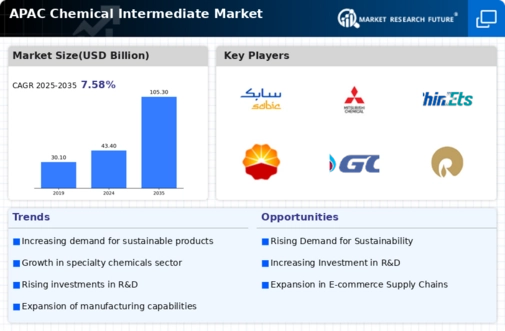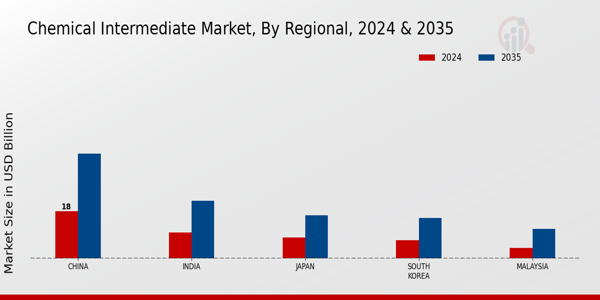The APAC Chemical Intermediate Market has emerged as a dynamic and competitive arena influenced by various factors, including economic development, industrialization, and innovation in product offerings. This market showcases a blend of regional players and multinational corporations vying for market share, driving advancements in technology and sustainability. The competitive landscape is marked by significant investments in research and development, leading to the introduction of new chemical intermediates that meet the evolving demands of end-user industries such as automotive, pharmaceuticals, and consumer goods.
Companies in this market are focusing on strategic partnerships and collaborations to harness local market knowledge and enhance their competitive positioning, thereby fueling overall growth in the chemical sector across the Asia-Pacific region. SABIC Innovative Plastics has established itself as a formidable competitor within the APAC Chemical Intermediate Market, leveraging its extensive product portfolio and technological prowess. The company’s strengths lie in its ability to develop high-performance plastics that cater to diverse applications, including automotive, healthcare, and electronics.
SABIC Innovative Plastics has a robust market presence in the Asia-Pacific region, supported by a network of production facilities and customer service centers that ensure efficient delivery and support. Its commitment to innovation is reflected in the development of advanced materials that enhance performance while meeting sustainability standards. With a focus on customer collaborations, SABIC Innovative Plastics continuously works to address sector-specific challenges, reinforcing its position as a leader in the competitive landscape. SABIC operates as a major player in the APAC Chemical Intermediate Market, focusing on producing a broad range of chemical intermediates pivotal for various industries.
The company offers key products including polymers, fertilizers, and specialty chemicals that are essential to the manufacturing processes in sectors such as agriculture, automotive, and consumer goods. SABIC's market presence in the Asia-Pacific region is characterized by strategic investments in state-of-the-art production facilities that enhance its capacity and efficiency. The company's strengths include a dedicated R&D framework that fosters innovation and the ability to quickly adapt to changing market demands.
Moreover, SABIC has pursued a series of mergers and acquisitions aimed at expanding its footprint and enhancing its product offerings in the APAC region, thereby solidifying its competitive edge and ensuring long-term growth in this critical market.





















